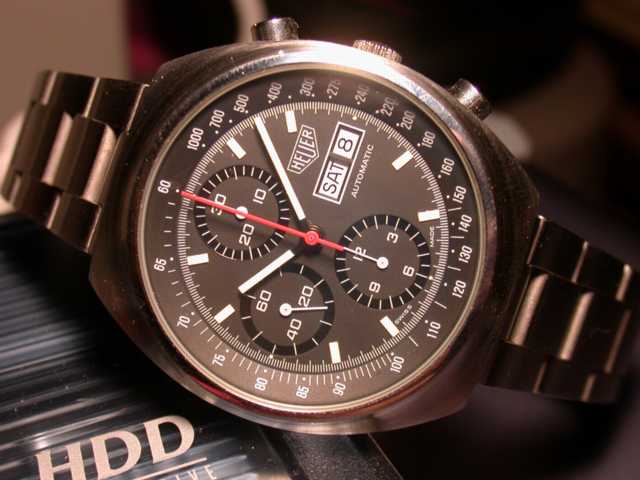| Informational Websites | ChronoMaddox -- the legacy of Chuck Maddox | OnTheDash -- vintage Heuer website | Zowie -- Omega information |
| Discussion Forums | ChronoMaddox Forum | Heuer Forum | Omega Forum |
| Counterfeit Watchers | ChronoTools Forum | ChronoTrader Forum |
|
|
The largest independent, non-commercial, consumer-oriented resource on the Internet for owners, collectors and enthusiasts of fine wristwatches. Online since 1998. | |||||||
|
||||||||
|
||||||||
 |
Vintage Heuer Discussion Forum
The place for discussing 1930-1985 Heuer wristwatches, chronographs and dash-mounted timepieces. Online since May 2003. | ||||||
| |||||||
| |||||||
I have not had the time to work through these four messages, but want to make a very quick point: The dials also seem to be different between the Pasadena and the non-Pasadena (in addition to the presence or absence of the "Pasadena").
Look at the markers at 3-6-9-12. Pasadena has angular markers (rectangular), we can call them "dashes" / non-Pasadena has smaller dots. I have been checking these, as I have spotted them, for the last two weeks, and have not seen any exception to this pattern.
Jeff
/11Pasadena.jpg)

++++++++++++++++++++++++++++
: With this paragraph Stewart, you've solved the riddle whether you
: know it or not!
: It was Heuer's model code schema putting them into a bit of a fix.
: The terminal numeral of the numeric code usually denotes
: material, in these six digit codes as well as the four digit
: ones, with some exceptions like the divers. 3 is most common,
: and denotes steel, 5 is gold plate, 8 is solid gold and 1
: denotes a PVD finish.
: In calling the PVD 750.501 a Pasadena and the steel 750.503 a
: Montreal, a problem arose when they wanted to produce a steel
: Pasadena. Logically, that model would be a 750.503, but that
: number was already taken by the Montreal. Looks like the
: compromise was to append a -3 to denote a steel case to the
: existing 750.501 code for the Pasadena and differentiate it from
: the existing Montreal. Hence 750.501-3.
: Makes complete sense to me now.
| Chronocentric and zOwie site design and contents (c) Copyright 1998-2005, Derek Ziglar; Copyright 2005-2008, Jeffrey M. Stein. All rights reserved. Use of this web site constitutes acceptance of the terms of use. | CONTACT | TERMS OF USE | TRANSLATE |